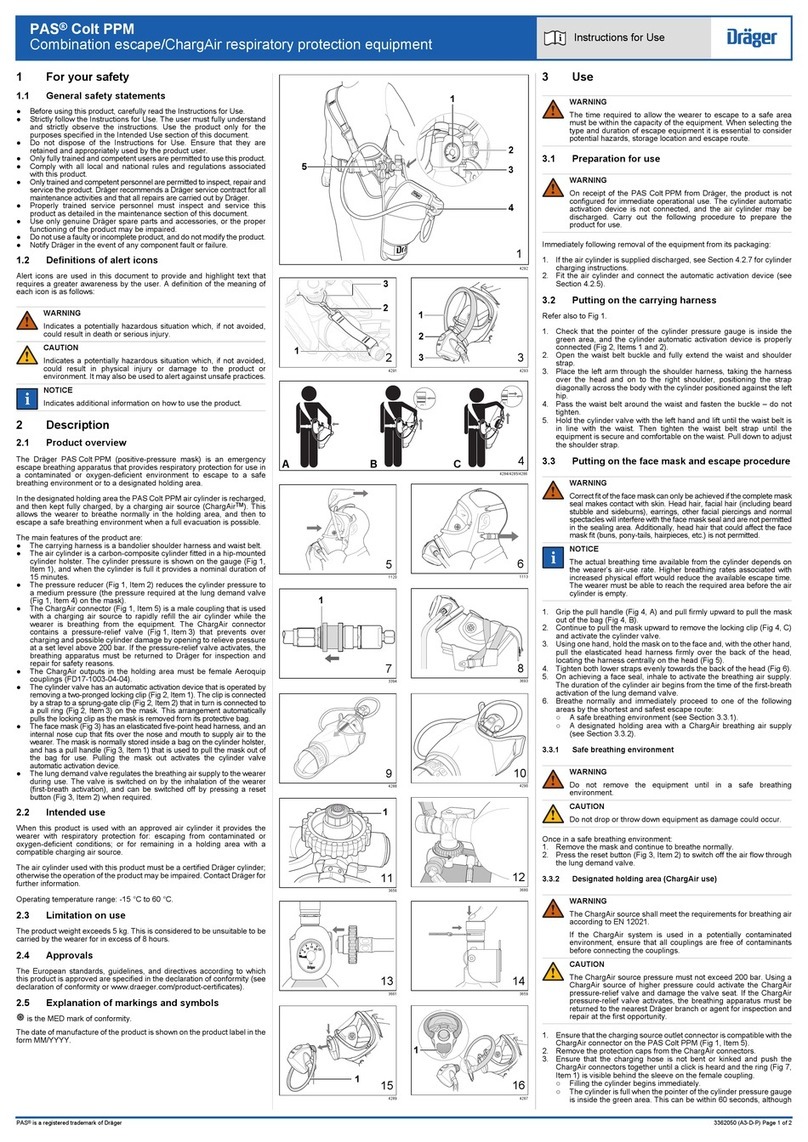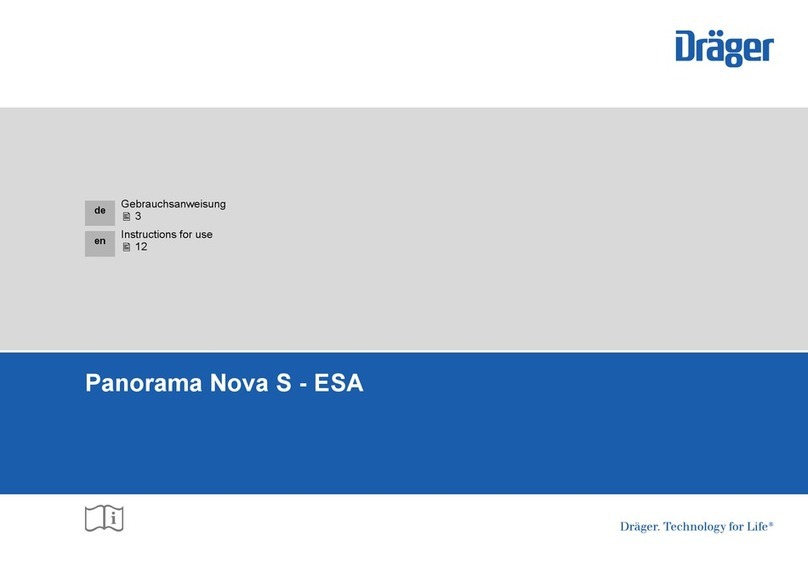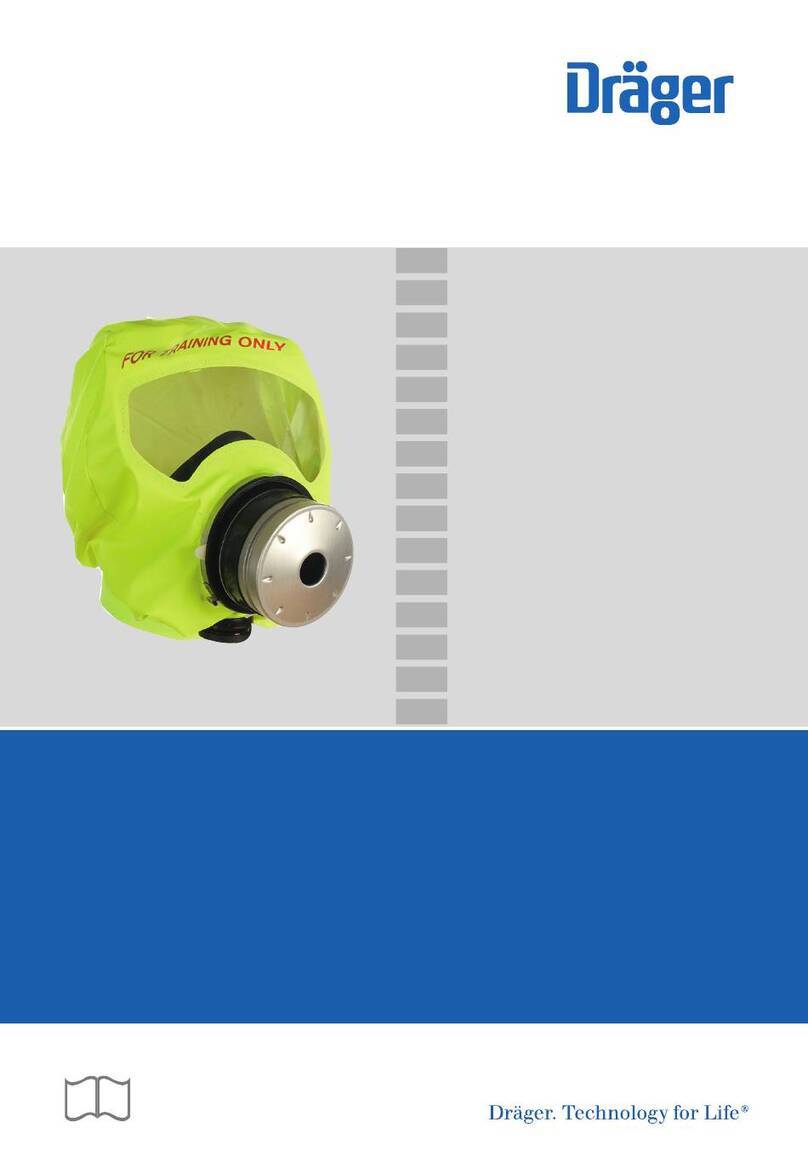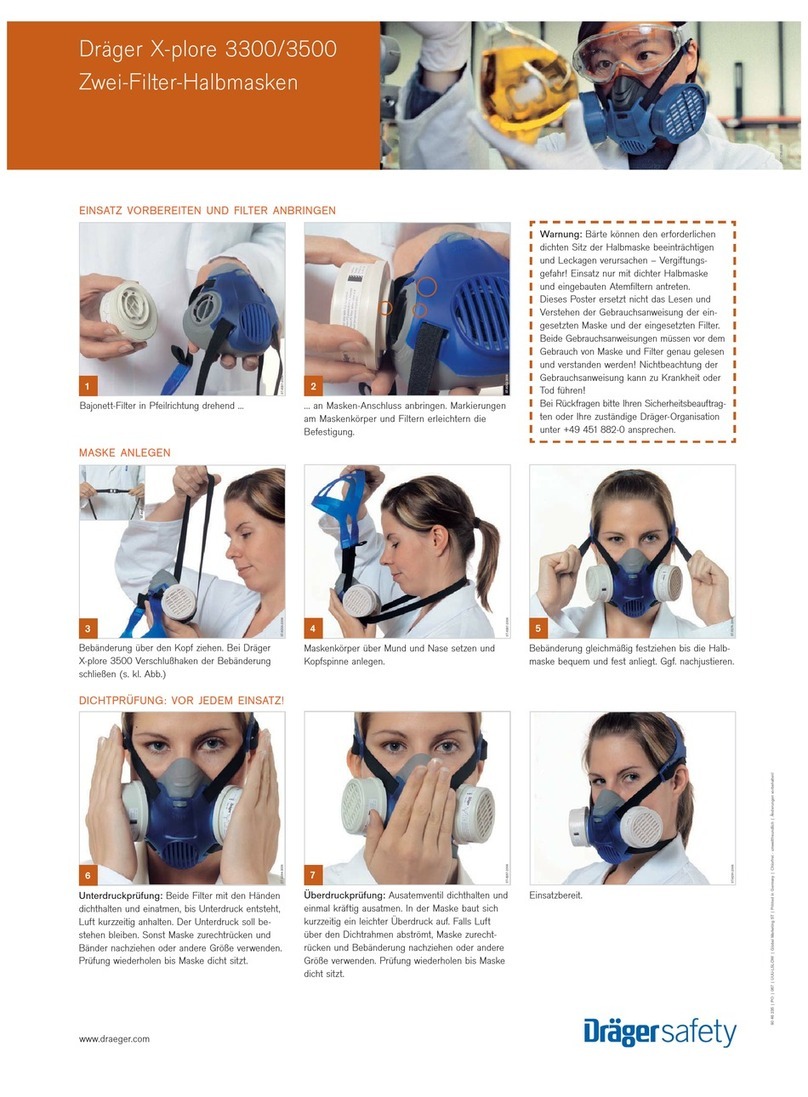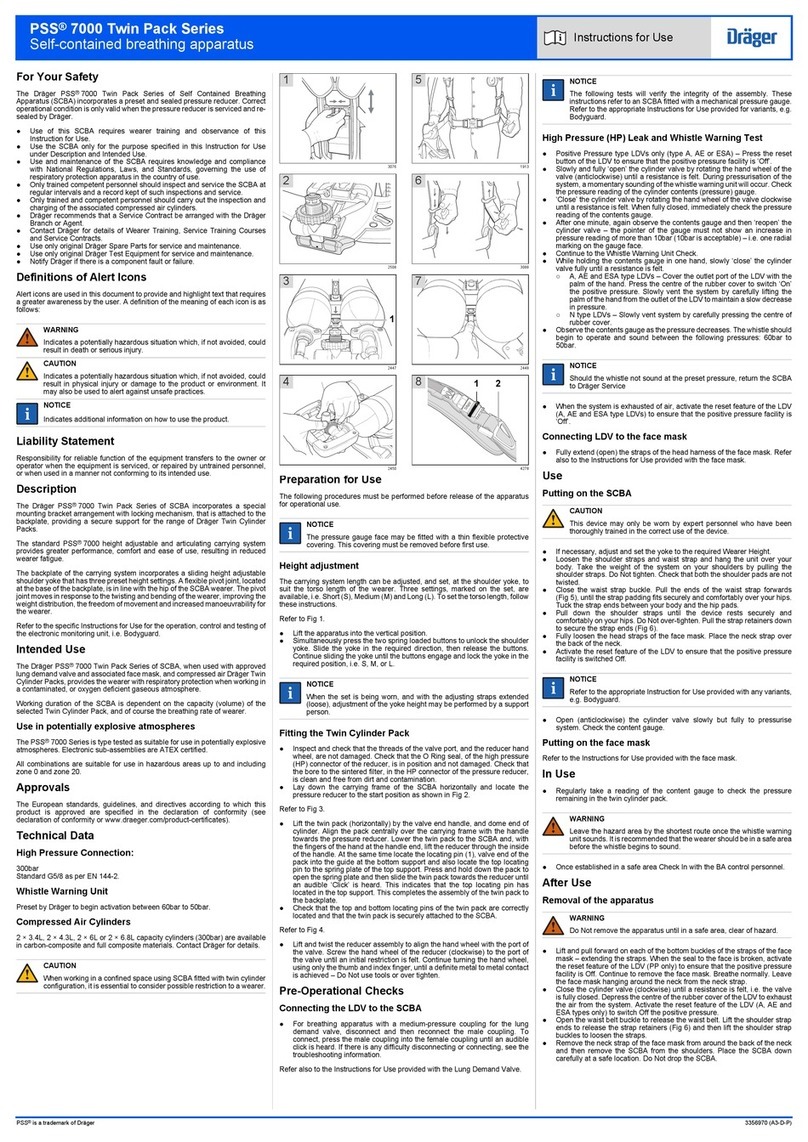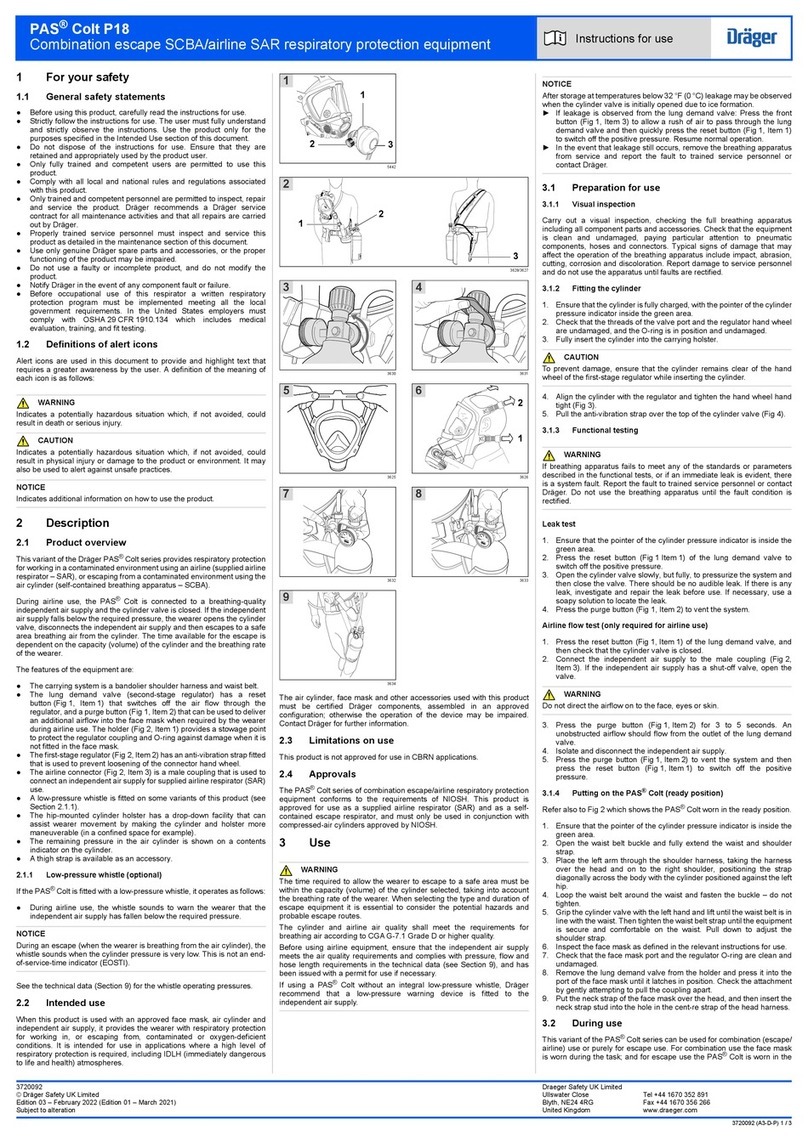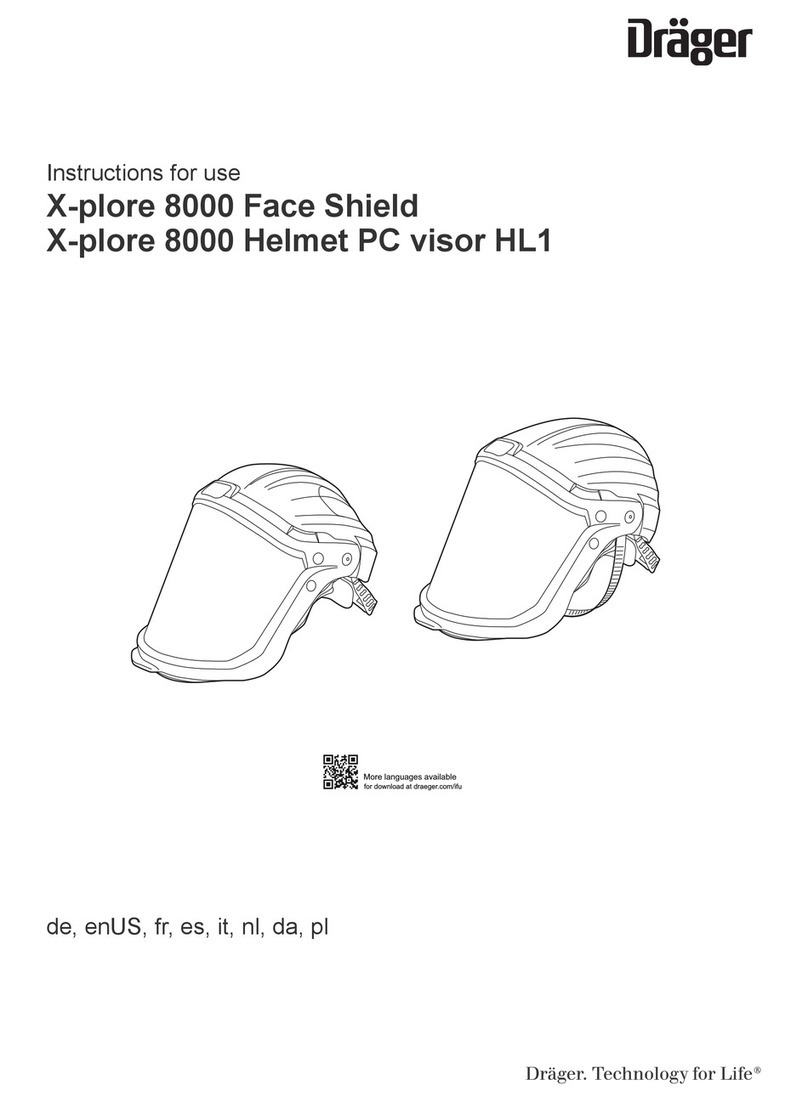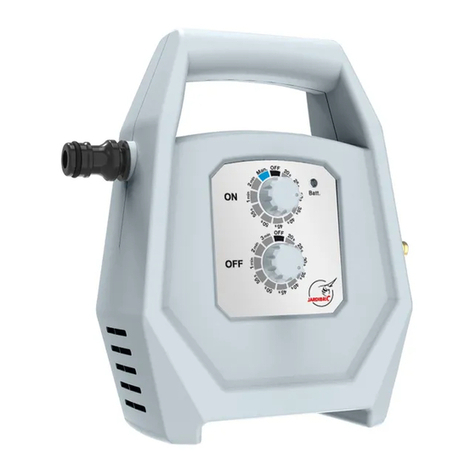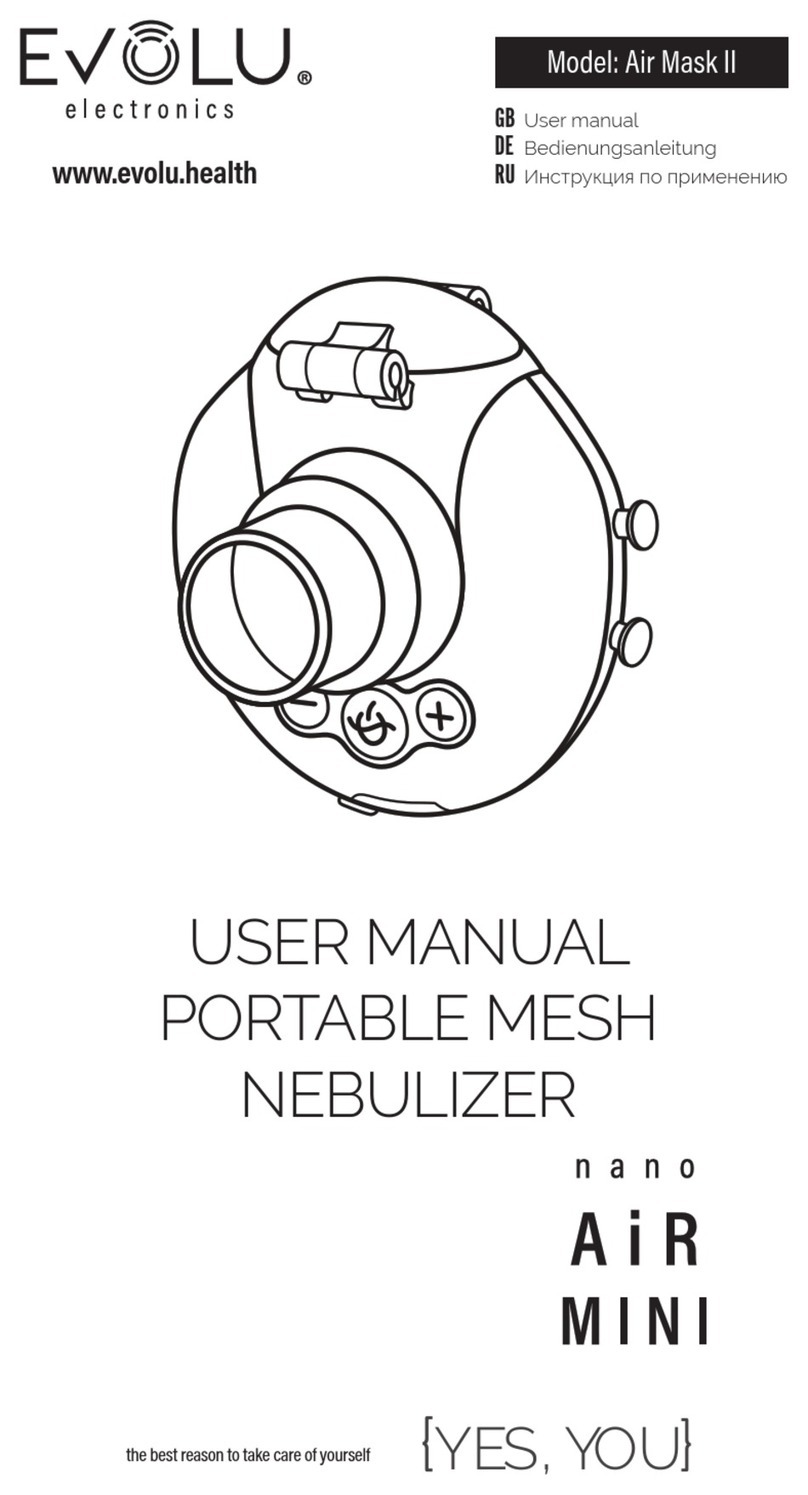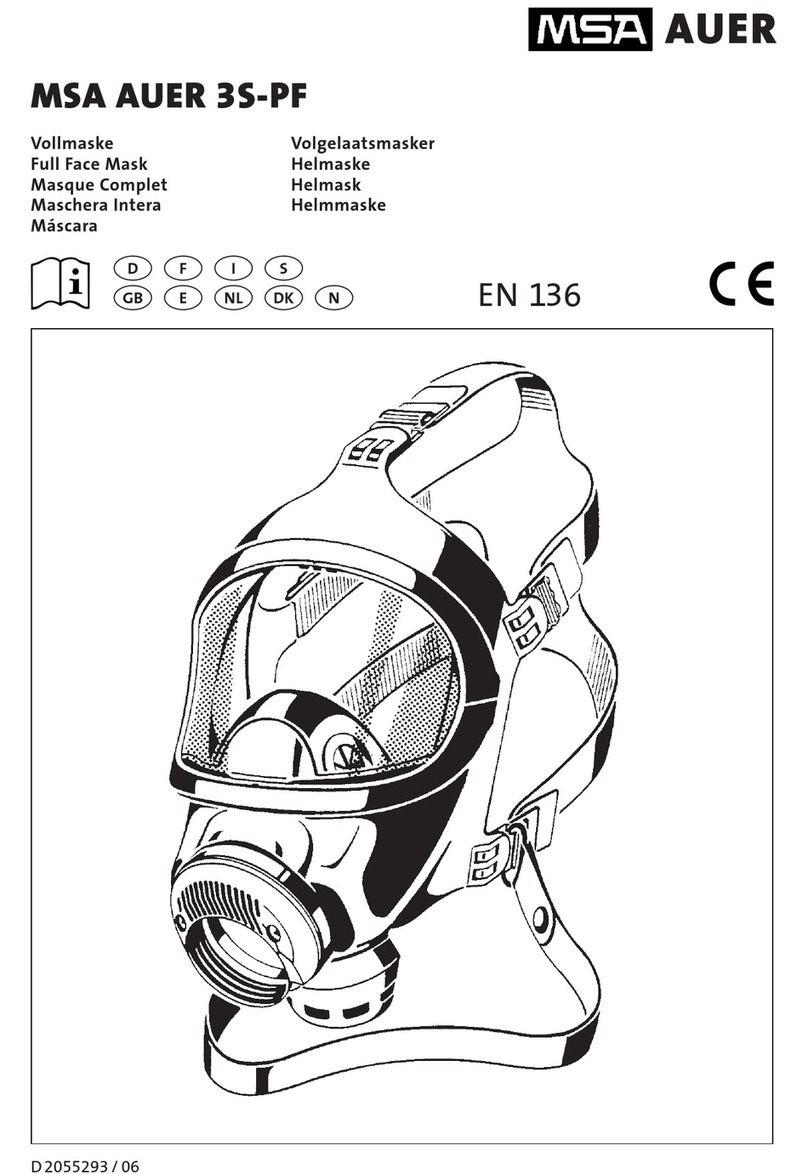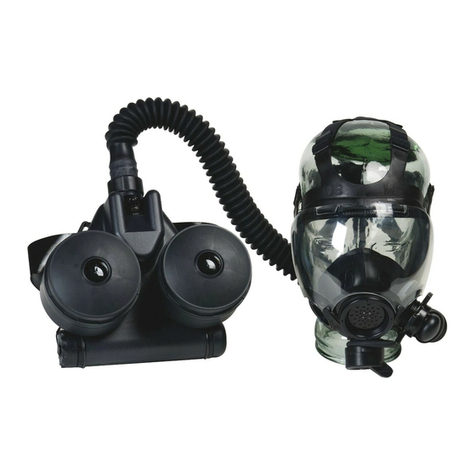3363575 (A3-D-P)
1 For your safety
1.1 General safety statements
●Before using this product, carefully read the Instructions for Use.
●Strictly follow the Instructions for Use. The user must fully understand
and strictly observe the instructions. Use the product only for the
purposes specified in the Intended Use section of this document.
●Do not dispose of the Instructions for Use. Ensure that they are
retained and appropriately used by the product user.
●Only fully trained and competent users are permitted to use this
product.
●Comply with all local and national rules and regulations associated
with this product.
●Only trained and competent personnel are permitted to inspect, repair
and service the product. Dräger recommend a Dräger service contract
for all maintenance activities and that all repairs are carried out by
Dräger.
●Properly trained service personnel must inspect and service this
product as detailed in the Maintenance section of this document.
●Use only genuine Dräger spare parts and accessories, or the proper
functioning of the product may be impaired.
●Do not use a faulty or incomplete product, and do not modify the
product.
●Notify Dräger in the event of any component fault or failure.
1.2 Definitions of alert icons
Alert icons are used in this document to provide and highlight text that
requires a greater awareness by the user. A definition of the meaning of
each icon is as follows:
WARNING
Indicates a potentially hazardous situation which, if not avoided,
could result in death or serious injury.
CAUTION
Indicates a potentially hazardous situation which, if not avoided,
could result in physical injury or damage to the product or
environment. It may also be used to alert against unsafe practices.
NOTICE
Indicates additional information on how to use the product.
2 Description
2.1 Product overview
The Dräger X-plore 9500 (Fig 1) is a belt mounted manifold that is used to
connect an external breathing air supply (an airline) to a mask. The
manifold has an input connector (5) to connect the airline and has an
output at a mask adaptor (1) to connect the mask.
During use, a pressure reducer inside the manifold supplies a continuous
flow of air from the airline to the mask. This air flow is within the safe limits
required at the mask. The excess flow valve (2) in the mask adaptor
releases excess air continuously during use to maintain the correct air
pressure inside the mask. The X-plore 9500 is available with or without an
adjustable flow control valve (3). When fitted, the flow control valve allows
the wearer to adjust the air flow within preset limits.
The X-plore 9500 is available with or without a whistle. When fitted, the
whistle (4) is a low input pressure warning device which sounds during use
to alert the wearer if the breathing air supply falls below the pressure
required to provide adequate breathing air.
The X-plore 9500 is used with a compatible Dräger face mask from the
FPS 7000, X-plore 6000 or Panorama Nova series of masks (the Dräger
X-plore 6300 mask is shown). The compatible Dräger masks are classified
as Class 4B according to EN 14594:2005. For a full description of the
mask see the Instructions for Use supplied with the product.
Radio-frequency identification (RFID) is an option available for this product
to allow electronic asset management and tracking using a radio-frequency
reader. When fitted, the RFID tag is positioned inside the manifold casing.
2.1.1 Filter respirator use
The mask can be used as a filter respirator when the wearer is moving to
or from a work area. Removing the blanking plug from the mask adaptor
and fitting a filter canister (Fig 2) prepares the mask for filter respirator use.
The mask only operates as a filter respirator when there is no airline
connected or the supply from the airline falls to a very low pressure.
The filter canister is an accessory available from Dräger. When using the
mask as a filter respirator, see also the Instructions for Use supplied with
the filter canister.
2.1.2 Breathing air supply
The breathing air supply (airline supply) is an external source of breathing air
from an air cylinder or compressor arrangement capable of supplying the
specified air quality, pressure and flow rates (see Section 3.1 for details).
2.2 Intended use
The X-plore 9500 is intended for use with approved compressed airline
breathing equipment or a filter canister to provide respiratory protection
against the effects of harmful substances. The equipment is intended to be
used as an airline respirator at a work area, or as a filter respirator for
moving to or from the work area.
The compressed airline breathing equipment and other accessories used
with this product must be certified components, assembled in an approved
configuration; otherwise the operation of the device may be impaired.
Contact Dräger for further information.
2.3 Limitations on use
This product is not approved for use in CBRN (chemical, biological,
radiological and nuclear) applications.
2.4 Approvals
The Dräger X-plore 9500 must be used as a part of an approved airline
respiratory protection system. It is the responsibility of the user to ensure
that the equipment is approved by a relevant local or national approval
agency before using the equipment.
2.5 Marking and symbols
The product type is indicated on the label on the manifold casing, and the
product serial number is marked on the body of the manifold
3 Use
3.1 Breathing air supply
WARNING
The quality of the air supply shall meet the requirements for
breathing air according to EN 12021. Do not use oxygen or
oxygen-enriched air. The moisture content of breathing air should
be controlled within the specified limits in the standard to avoid
freezing the equipment.
Carry out a risk assessment of the workplace to ensure that it is
not possible to connect to any air supply other than breathable air
(e.g. Nitrox).
Adequate protection may not be provided by the equipment in
certain highly toxic atmospheres.
The user must ensure that the capacity of the air supply system is
sufficient for every user connected to it. The user must also ensure
that they can retreat safely if the supply from the airline fails.
Use a breathing air cylinder arrangement with a pressure reducer, or a
fixed or mobile compressor with a suitable filtration and air heating or
cooling system. Ensure that the air supply meets the air quality
requirements, and complies with the following pressure and flow
requirements:
●Input pressure 0.28 to 1.0 MPa
●Input flow 200 to 1200 liters/minute (to provide the full range of
flow on versions with a flow control valve, a minimum
of 350 liters/minute is required)
The maximum number of users that can be connected simultaneously to
Dräger breathing air supply equipment is specified in the supply equipment
Instructions for Use.
3.1.1 Compressed air supply hose
Ensure that the airline coupling is compatible with the product input
coupling. The coupling shown in the illustrations is the CEJN/Rectus type
coupling (other couplings are available from Dräger).
When using Dräger approved hose: a maximum of 100 m of hose may be
used, and no more than four individual hoses (a maximum of five hose
connections) are permitted in the airline. The maximum working pressure
of the Dräger compressed air supply hose is 3.0 MPa.
3.2 Preparation for use
3.2.1 Preparing the product
The manifold can be worn on the left or right side. To swap sides, loosen
the belt, remove the backplate if fitted and rotate the manifold (Fig 3).
When reassembling, ensure that the lip of the whistle cover sits under the
rib in the manifold bracket (Fig 4). Ensure that the position of the manifold
on the waist allows full head movement without pulling the hose, and that
the hose will not present a snag hazard.
If using a version without an integral whistle, Dräger recommend that a
low-pressure warning device is fitted to the air supply.
1. Carry out a visual inspection (see Section 5.2).
2. Put on the belt and adjust as necessary.
3. Connect the mask adaptor to the mask (Fig 5).
4. Fit a filter canister to the mask if required: remove the blanking plug
and fit the filter to the mask adaptor (Fig 2). The filter canister should
only be fitted in a non-hazardous environment.
WARNING
Correct fit of a mask can only be achieved if the complete mask
seal makes contact with skin. Head hair, facial hair (including
beard stubble and sideburns), earrings, other facial piercings and
normal spectacles will interfere with the mask seal and are not
permitted in the sealing area. Additionally, head hair that could
affect the face mask fit (buns, pony-tails, hairpieces, etc.) is not
permitted.
5. Put on the mask (see the Instructions for Use supplied with the mask).
6. If a filter canister is fitted, proceed to the work area using the mask as
a filter respirator.
7. Connect the airline supply to the manifold input coupling (Fig 6). If a
whistle is fitted, it will sound briefly as the pressure increases.
8. Ensure that the pneumatic hoses are not kinked or compressed by
clothing or equipment.
9. Take several deep breaths to ensure that sufficient air is available and
then breathe normally.
3.3 During use
NOTICE
The excess flow valve (Fig 1, Item 2) releases air continuously
during use to maintain the correct air pressure inside the mask.
This is normal operation for the X-plore 9500.
Where hearing protection or sound attenuation communications
equipment is used, consider the reduction in audibility of the
whistle.
Flow control valve: Set the control knob to the minimum flow position at
the start of the task (Fig 7). Use the knob to adjust the air flow as necessary
to suit your work intensity.
Air supply failure: If the whistle sounds or the air supply fails, immediately
cease the work activity and leave the hazardous area by the shortest and
safest route. Do not disconnect the airline supply from the manifold.
Remove the mask as soon as it is safe to do so.
Filter respirator use: When a filter canister is fitted, disconnect the airline
from the manifold to move from the work area using the mask as a filter
respirator.
